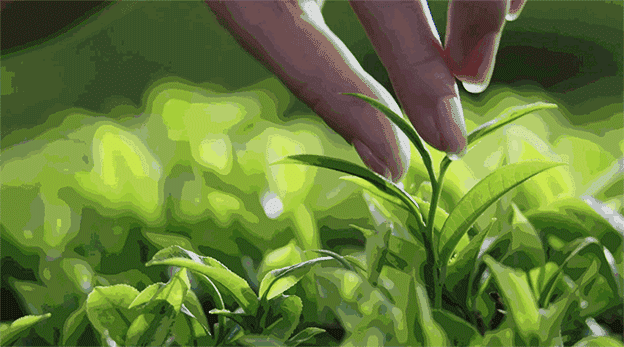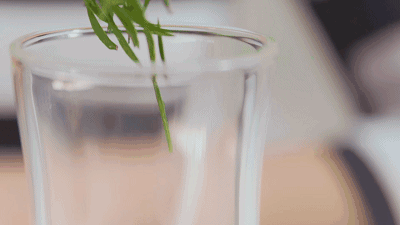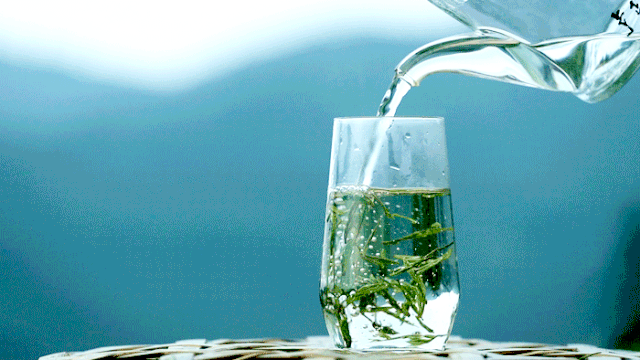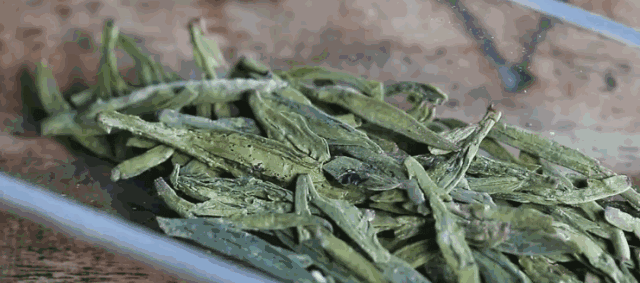
In the winter of 2020, when everyone’s attention is focused on the new coronary pneumonia, the flu has already quietly struck.

In the flu season, in addition to the good habit of washing hands and wearing masks, a Japanese study showed that drinking green tea every day can also effectively prevent flu.
Drinking green tea helps prevent flu
A multi-departmental cohort study in the field of labor published by a research scholar on diet and health in the International Humanities College of Fukuoka Women’s University in Japan in the European Journal of Clinical Nutrition shows that green tea has a good preventive effect on influenza. The more tea you drink, the risk of influenza infection The lower.

The results of the study showed that compared with the group who drank almost no green tea, the group who drank green tea almost every day had a significantly lower risk of influenza infection by 39%; the more green tea was drunk, the lower the risk of infection, and there was a very significant relationship between the two.
Through the analysis of the presence or absence of vaccination, it was found that in the unvaccinated group, people who drank green tea almost every day had a 52% reduction in the risk of influenza infection, which was close to half the preventive effect of influenza vaccine, and the effect was extremely significant.
Multiple studies confirm the benefits of green tea
In addition to preventing influenza, many health benefits of green tea on the body have also been confirmed by research.

1. Anti-cancer
Japanese people who love tea have spent 9 years investigating and found that drinking 4 cups of green tea a day can reduce the risk of cancer by 40%. Studies in Europe and the United States have confirmed that green tea can reduce breast, prostate, lung, oral cavity, bladder, colon, stomach, and pancreas. The risk of tumors in multiple sites.
2. eye protection
A 2010 study in the United States found that various compounds in green tea have a protective effect on eye tissues, especially those related to the cornea.
3. Prevent dementia
Elderly people over the age of 70 drink 4 cups of green tea a day on average, and the probability of developing depression symptoms is reduced by 44%. Elderly people who drink more than 2 cups of green tea a day have a 50% lower chance of dementia than their peers who drink less than 3 cups a week. This is the conclusion drawn by researchers from Tohoku University in Japan after 3 years of follow-up of more than 14,000 elderly people over 65.
4.Mouthguard
A study published in the Proceedings of the American Academy of Sciences stated that the theanine contained in green tea can increase the body’s ability to resist infection by 5 times; gargle with green tea can effectively prevent bleeding gums and tooth decay.
5.Good for the heart
Research from Tohoku University in Japan also found that compared with people who drink less than 1 cup of green tea a day, men who drink more than 5 cups of green tea a day have a 22% reduction in the risk of death due to cardiovascular and cerebrovascular diseases, and a 31% reduction in women.
6.Anti-Aging
Tea is rich in antioxidants, which helps strengthen the muscle tissue of the legs of elderly women, anti-aging, and helps balance cholesterol levels and maintain weight.
3 ways to make a good cup of green tea
The health benefits of green tea benefit from tea polyphenols, chlorophyll, theanine, amino acids, vitamins and other substances. If you do not pay attention to the method of making tea, the health effects will be greatly reduced.
Generally speaking, the brewing methods of green tea can be divided into three methods: upper casting method, middle casting method and lower casting method.

Upper investment method: add water first, then tea
The purpose is to make tea leaves come into contact with water slowly, and the infiltration speed is slow and gentle, which can prevent the tea from being scalded due to high water temperature. The upper casting method is mostly suitable for famous and delicate green teas. They are not resistant to high temperature and are generally full of sprouts or covered with hairs, such as special-grade Biluochun and Xinyang Maojian.
Brewing method:
Pour seven minutes full of boiling water into the cup, wait for a few seconds, and throw tea when the water temperature drops below 90℃. After almost all the tea leaves sink below the water surface, gently turn the cup to make the tea soup in the cup even. Drink.
Middle Investment Law
Add water first, then tea, then water
On the one hand, the CIC method can prevent excessive water temperature from damaging the tea and affect the aroma and taste. On the other hand, it can fully blend the tea and water to fully release the flavor of the tea. The CIC method does not require high levels of tea, and generally green tea can be brewed in this way.
brewing method:
Pour boiling water into about 1/3 of the cup. When the temperature of the water cools to about 90°C (wait a few seconds), put the tea into the cup, turn the cup slightly to infiltrate the tea, and then add water at 80°C to 90°C. Slowly add to 70% full, and drink later.
Lower casting method: add tea first and then water
The drop method can make the tea contact with the water faster and avoid the disadvantages of the water cooling too fast, especially in winter. The drop method is suitable for most teas, such as Taiping Houkui, Luan Gua Pian, etc., with mature raw materials and less compact shapes.
Brewing method:
Put the tea into the cup, add 80℃~90℃ water to 70% full, and drink it later.
Tea experts’ tips for buying tea
You don’t have to choose expensive tea, you can buy the most cost-effective green tea by learning these tips.

Look at the logo
Tea products with complete identification should have product name, ingredients, grade, executive standard number, raw material origin, production plant name, plant location, net content, production date and shelf life, etc.
Look at the color
The basic quality of green tea is clear broth and green leaves. When buying, it depends on whether the tea leaves are tight and the color is emerald green or dark green.
Smell
Good quality green tea smells very fragrant, but poor quality with astringent taste.
Taste
Take 5 grams of tea leaves, put them in a 250 ml glass, and brew 2 times with boiling water, each time for 10 minutes.
Observe the shape of the leaves after brewing. The veins of real tea are obviously networked. The surface of the leaf stem is smooth and the underside is hairy. The leaf color is emerald green, green or yellow-green.
Drinking into the mouth, the fragrance is rich, the taste is pure, the inferior tea has no tea fragrance, the tea is turbid and blue, exudes a clear odor, and has astringent taste.
It should be reminded that too cheap tea may be mixed with tea powder, tea chips, etc. It is not recommended to buy. In addition, green tea is slightly cold, which is easy to irritate the intestines and stomach. People with cold stomach or frequent stomachache should drink less or not; it is not suitable to drink tea before going to bed, before meals, and after meals.
Comments